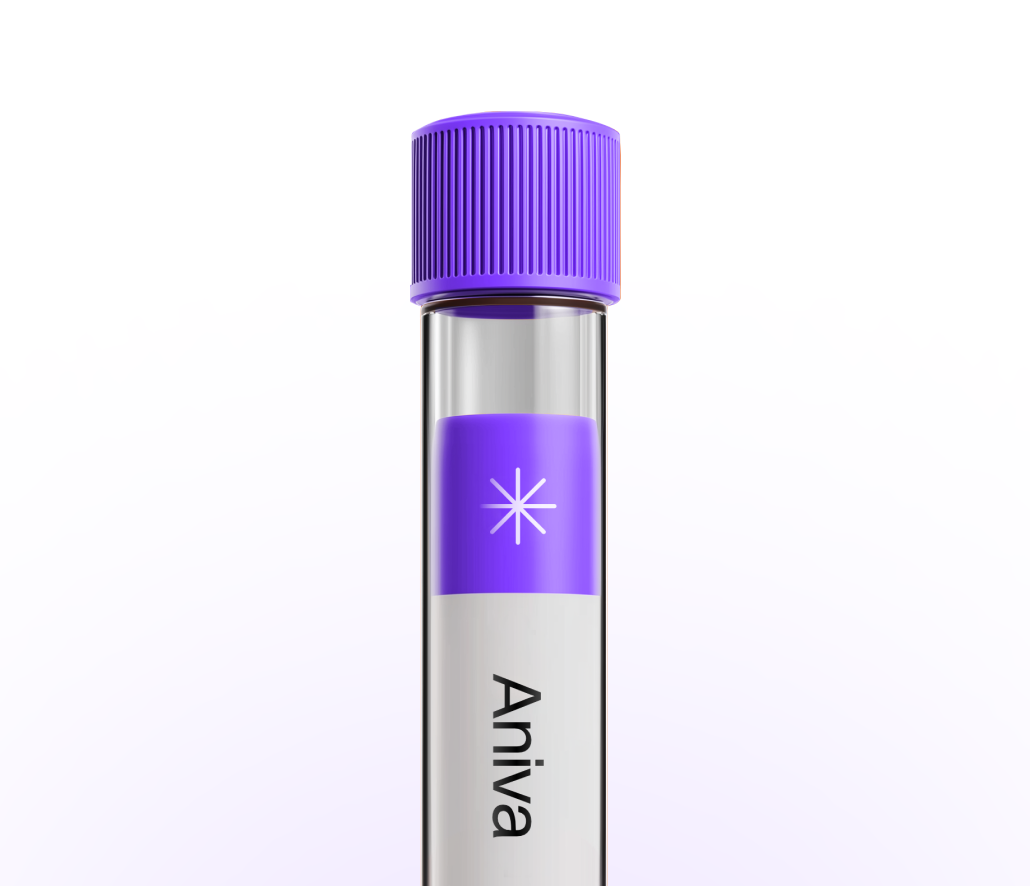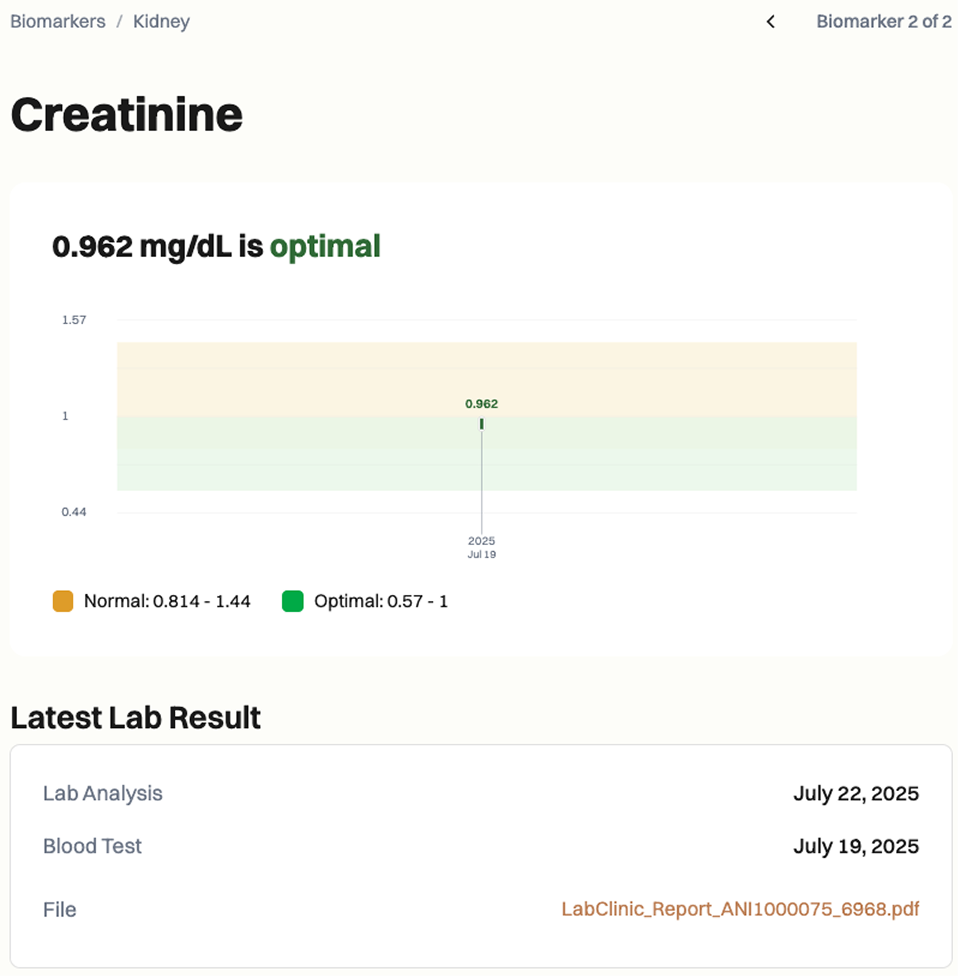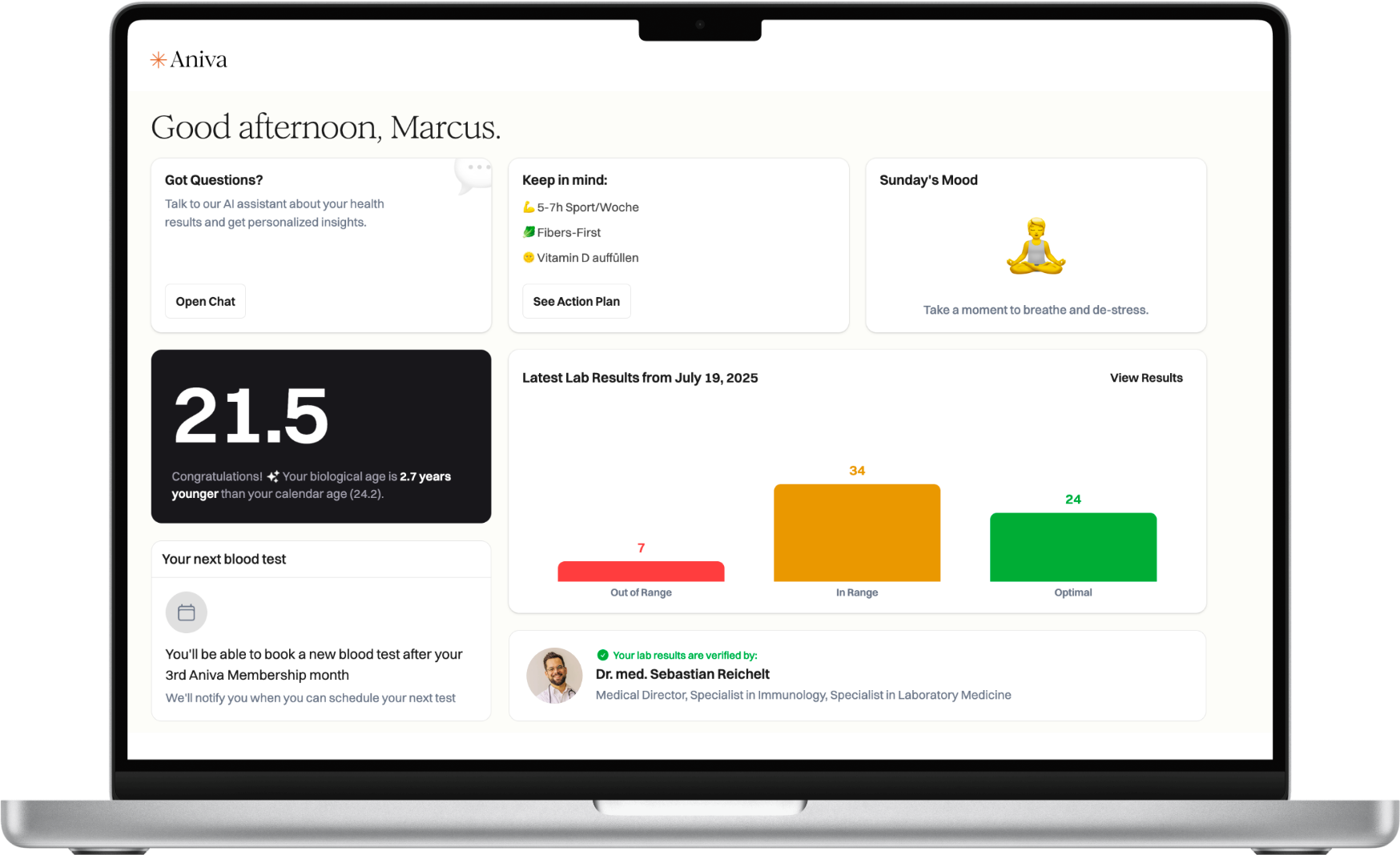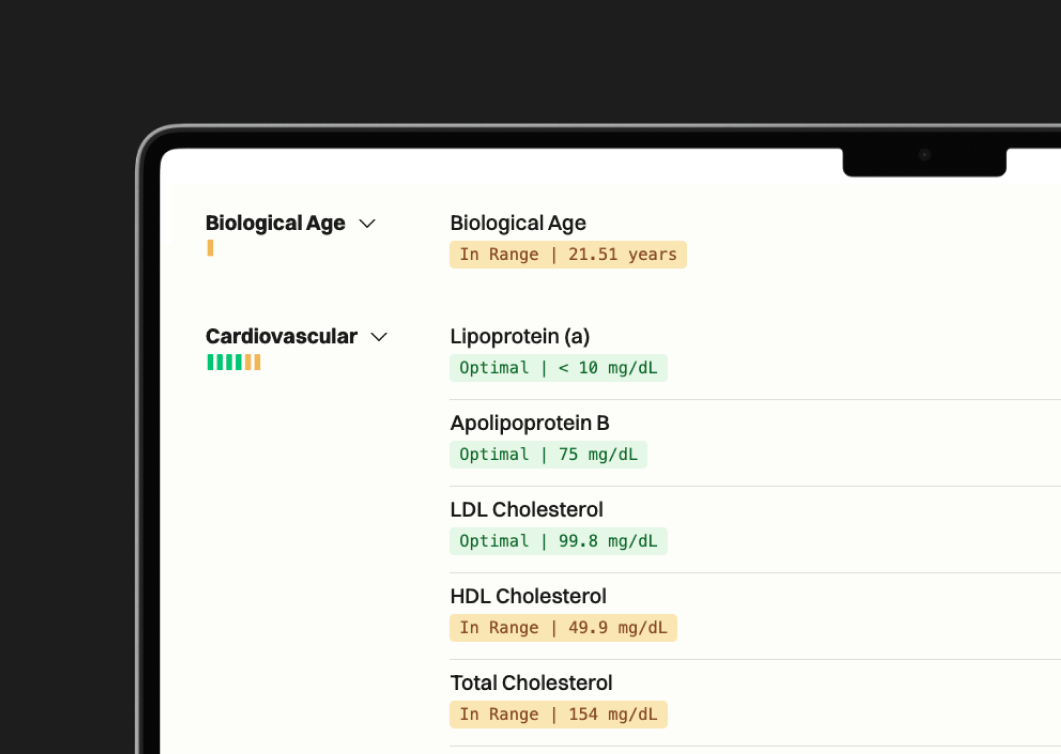A simple ratio balancing monocytes and “good” cholesterol to hint at inflammation and heart health.
Securely stored in EU
Cancel anytime
Test 100+ biomarkers

Less than 5 minutes waiting time. One
simple test at one of our 20+ locations.
Get your lab reports within one week.
Accessible on our app and per PDF.
All your health records stored
in a single, convenient place.

Clinicians may use MHR as an additional context marker for vascular inflammation and cardiometabolic risk. It can add nuance alongside standard tests if you have high cholesterol, diabetes, metabolic syndrome, or a family history of heart disease. Results can guide lifestyle focus and whether to follow up with routine lipids or inflammation testing. You can test this marker with Aniva across Germany and Finland.
Clinicians may use MHR as an additional context marker for vascular inflammation and cardiometabolic risk. It can add nuance alongside standard tests if you have high cholesterol, diabetes, metabolic syndrome, or a family history of heart disease. Results can guide lifestyle focus and whether to follow up with routine lipids or inflammation testing. You can test this marker with Aniva across Germany and Finland.
High: May reflect higher inflammatory activity and/or lower HDL, signaling a less favorable cardiometabolic profile. Consider retesting when well, focus on heart-healthy habits, and review standard lipids and hs‑CRP with your clinician.
Low: May suggest lower inflammatory burden or more favorable HDL levels. Interpret within your overall risk factors and standard risk scores. Trends over time are more helpful than a single value.



Common factors that can skew MHR include acute infections or inflammation, recent surgery or injury, strenuous exercise, smoking, and heavy alcohol use. Medicines that affect white blood cells (steroids, immunosuppressants) or lipids (statins, fibrates, niacin, estrogen therapy) can shift results. Non‑fasting is acceptable for HDL, but very large meals and dehydration may still nudge values. Try to test when you feel well and keep conditions similar between tests.
Special situations (when to confirm or adjust): pregnancy or postpartum, active autoimmune flares, cancer therapy, or within two weeks of vaccination or acute illness.
What does my MHR result mean? A higher MHR can suggest more inflammation and/or lower HDL. A lower MHR may indicate less inflammation. Use it with standard risk tests.
Do I need to fast for this test? No. Modern guidelines allow non‑fasting HDL. Keeping similar testing conditions helps compare results.
What can affect the result? Recent illness, hard workouts, smoking, alcohol, steroids, immunosuppressants, statins, fibrates, niacin, and hormone therapy can change MHR.
How often should I test it? Many people check it with routine blood work, often every 6–12 months, or when monitoring lifestyle changes.
How quickly will I get results? Most labs report the underlying CBC and HDL within 1–3 business days.
What should I discuss with my clinician? Review your MHR alongside a lipid panel, hs‑CRP, and overall risk. Ask whether any medicines or recent illnesses might have influenced the value.



One annual blood test (100+ biomarkers)
Clinician-reviewed insights
Personalized action plan
Access to our AI Concierge
Access to curated products


63%
44%
70%